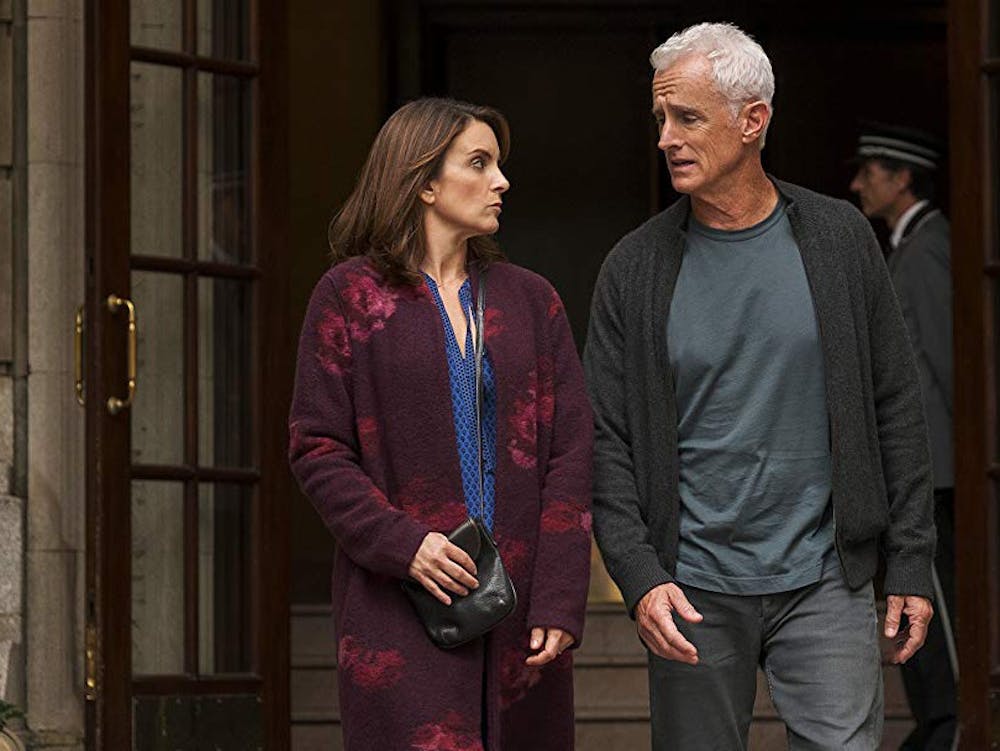Amazon Prime’s newest anthology series, which premiered Oct. 18, follows a string of New Yorkers navigating their way through dating apps, running clubs, therapy sessions and grocery aisles in search of one connection to make it all worthwhile. The characters, ranging from a grieving girl who sees her father in the silvering sideburns of a workplace acquaintance to an anxiety-ridden man who manages to impale himself on a martini glass during a second date, collectively demonstrate that love can manifest in clumsy and unconventional ways, particularly in the city that never sleeps. Despite each episode’s relatively unique premise, some of the authenticity of its source material is lost in the neatness of each happy ending.
Written and directed by John Carney, with help from Tom Hall, Sharon Hogan and Emmy Rossum, the series is inspired by The New York Times column of the same name. The weekly column began publication in October of 2004 and since amassed 750 stories. Four years ago, it became a podcast produced in collaboration with WBUR and hosted by Meghna Chakrabarti, in which the personal essays are read by notable actors, followed by conversations with the writers. Despite this “real life” basis, the series adaptation is unabashed in its blockbuster appeal. The characters all enjoy considerable socioeconomic comfort (cue the all-white-outfitted tennis courts and lavish lobbies furnished with kind-hearted doormen), reside in beautiful apartments that are astoundingly spacious given their urban context (apart from the homeless woman who lives on the streets solely out of principle) and are all physically attractive (think slender, tasteful and predominantly white). Of the nine couples and twenty-odd principle characters followed throughout the first season, each couple includes a white partner and there are only four non-white characters. Whether this speaks more to the writers of the New York Times column or the showrunners that adapted “Modern Love” for television is up for debate; however, the series’ lack of diversity was disappointing. The series’ purpose seems to be to represent “modern love” and all its nuances, yet it is set in one of the most diverse cities in America and fails to reflect this.
Despite its detachment from the multi-cultural fabric of New York, the series remains grounded in its exploration of imperfect characters who must face both heartbreaking and hilarious circumstances of vulnerability. “Take Me as I Am, Whoever I Am” delves into the realities of bipolar disorder, spearheaded by a stellar performance from Anne Hathaway. Hathaway effuses the euphoria of mania-induced peach-hunting in a grocery aisle with breathtaking grace. She shifts into the listless expression of a woman defeated by her emotional instability with the same ease. The scene that shows her collapsed on the bathroom floor, unable to make her limbs work, is extremely powerful. Her carefully rendered date night plans slowly unravel as a meticulously crafted meal simmers on the stove outside.
“At the Hospital, an Interlude of Clarity” features a beautiful bohemian woman (played by Sofia Boutella) who admits that she overindulges in the attention of strangers at the expense of her relationships. “When Cupid is a Prying Journalist” explores the process for forgiving infidelity, something that is not often seen on screen. Yet, while the premise of this episode is satisfying enough, following the unlikely kinship that develops between interviewer and subject in the office of a popular magazine, its execution falls flat. Dev Patel plays the male protagonist, a dating app entrepreneur named Joshua. The character is based on the creator of Hinge, Justin McLeod, whose story serves not only as fodder for the episode, but also for an upcoming film by Mason Novick, the producer behind “Juno” and “500 Days of Summer.” Yet the Amazonian incarnation of Justin fails to come across as either dynamic or relatable. Joshua’s capacity for forgiveness is announced to viewers, rather than understood, particularly since the object of his love is painted as similarly one-dimensional. Indeed, while the series was certainly advertised based on its star-studded cast, which also features the likes of Tina Fey and John Slattery, not all episodes live up to the talent they comprise.
“The Race Grows Sweeter Near its Final Lap,” the final episode of the series, offers a culmination of cardboard characters and saccharine story-bow-tying that seems characteristic of the season. The episode follows an elderly couple that has found love beyond the death of their first spouses; it is a sentimental story, but does not give viewers enough to hold onto or, to believe in. The first half of this episode follows this storyline, while the next twelve minutes are occupied by a series of epilogues that neatly tie up the stories of every couple previously featured. Although these brief scenes are visually interwoven in an appealing fashion, they offer little to deepen each story and feed into the cheesiest aspects of the show.
Although “Modern Love”’s overt subscription to the conventions of rom-com weakens its attachment to the “reality” of The New York Times column upon which it is based, the series is admirable in its unflinching optimism. It will likely be appreciated by those seeking to satisfy their sentimental side, particularly as the autumnal chill starts to set in and the hunt for a cuddle buddy begins in earnest.
Get The Chronicle straight to your inbox
Signup for our weekly newsletter. Cancel at any time.

